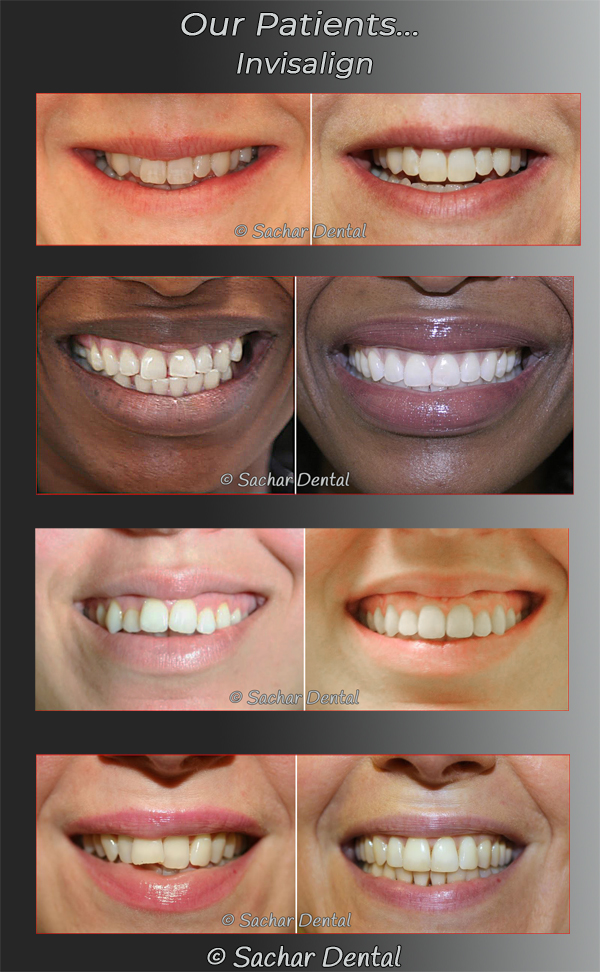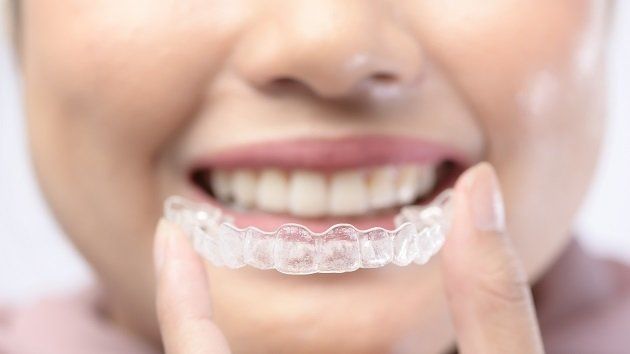The Expense of Invisalign: Recognizing the Investment in Your Smile
Wiki Article
Invisalign vs. Traditional Dental braces: Which Choice Is Right for You?
When thinking about orthodontic treatment, the selection between Invisalign and typical braces presents a number of vital factors that merit cautious evaluation. Invisalign provides a very discreet choice with detachable aligners, while traditional braces offer a much more noticeable yet efficient remedy for extreme imbalance.Overview of Treatment Options

In comparison, standard dental braces include metal braces and cables that are bound to the teeth. This technique applies constant stress gradually to achieve placement. While effective for intricate orthodontic concerns, conventional braces call for routine brows through for modifications and can pose challenges in keeping dental health due to the problem of cleansing around braces and cords.
Both choices have their qualities, and the selection commonly depends upon particular oral conditions, way of living preferences, and patient compliance. Inevitably, seeking advice from an orthodontic professional is essential for determining one of the most ideal therapy strategy customized to individual needs. Comprehending the nuances of each option can considerably influence the general success of orthodontic therapy.
Aesthetic Considerations
A substantial element affecting the option in between Invisalign and standard dental braces is the aesthetic charm each treatment uses. Invisalign aligners are crafted from clear plastic, making them practically unseen when used.On the other hand, standard braces are composed of metal brackets and cords, which can be a lot more noticeable. While innovations in orthodontic technology have actually brought about the advancement of smaller braces and tinted elastics, conventional dental braces still preserve an even more conspicuous profile. For some people, the presence of braces may deter them from seeking needed treatment.
Ultimately, the selection between Invisalign and traditional braces might rest on individual preferences pertaining to looks. Individuals who focus on discernment frequently lean toward Invisalign, while those that are much less worried regarding presence might select traditional braces. Comprehending the visual implications of each choice is critical for making an informed decision that aligns with one's way of living and choices.
Convenience and Convenience

In regards to convenience, Invisalign aligners are removable, enabling people to enjoy their preferred foods without constraint and keep optimum oral hygiene. Cleaning and flossing are streamlined, as the aligners can be taken out throughout these regimens, whereas traditional braces require careful maneuvering around braces and cords.
In comparison, traditional dental braces demand regular modifications, making them much less practical for those with active routines. Generally, the convenience and ease of Invisalign make it an appealing choice for lots of people seeking orthodontic therapy.
Therapy Duration and Efficiency
While both Invisalign and conventional braces are effective in dealing with dental imbalances, the period of treatment can vary dramatically in between the 2 options. Normally, Invisalign treatment can take anywhere from 12 to 18 months, relying on the complexity of the instance. The clear aligners work by gradually moving teeth right into their preferred placements, and normal follow-ups with an orthodontist assistance ensure progress continues to be on course.
On the other hand, traditional dental braces often need a longer dedication, usually varying from 18 months to three years. This is because of their set nature and making use of wires and brackets, which can be a lot more reliable for complex situations and severe imbalances (Invisalign). The treatment efficiency of conventional braces is well-documented, as they enable specific changes and better control over tooth movement
Inevitably, the selection between Invisalign and conventional dental braces might pivot on both the awaited treatment duration and the certain dental concerns handy. Consulting with an orthodontist is essential, as they can offer customized referrals based on individual demands, making certain the chosen method aligns with preferred timeframes and results.
Expense Comparison and Insurance Policy Choices
Price plays a significant function in the decision-making process for individuals thinking about orthodontic therapy, whether going with Invisalign or traditional dental braces. Generally, the expense of Invisalign varieties from $3,000 to $8,000, while standard dental braces commonly set you internet back in between $2,000 and $6,000. Variables affecting these costs include the intricacy of the instance, the period of treatment, and geographical place.Numerous dental insurance policy strategies offer partial insurance coverage for orthodontic therapies, but the specifics can vary extensively. Typically, conventional dental braces may be much more frequently covered by insurance policy plans contrasted to Invisalign, which some insurance providers categorize as a cosmetic procedure.
Additionally, a number of orthodontic techniques use flexible layaway plan, making both treatment choices a lot more obtainable. Clients must make inquiries regarding possible financing alternatives and price cuts for ahead of time payments. Examining the complete price, including insurance advantages and payment strategies, is essential for making an educated choice that straightens with both aesthetic choices and budget factors to consider.

Final Thought
In summary, the choice in between Invisalign and conventional dental braces depends upon several aspects, consisting of visual choices, comfort, therapy period, and price. Invisalign supplies a very discreet, detachable choice that promotes dental health and dietary adaptability, while traditional dental braces may be much more appropriate for complex dental concerns and typically come at a lower price factor. Ultimately, consultation with an orthodontist is essential to examine individual conditions and identify the most suitable treatment choice for accomplishing optimal oral placement.When thinking about orthodontic therapy, the selection between Invisalign and conventional dental braces offers several crucial variables that warrant careful assessment.Contrasting Invisalign and typical braces reveals distinctive therapy alternatives for orthodontic adjustment.While both Invisalign and conventional braces are reliable in dealing with oral misalignments, the duration of therapy can vary dramatically between the two options.Cost plays a significant role in the decision-making process for individuals thinking about orthodontic treatment, whether opting for Invisalign or conventional braces.In summary, the choice between Invisalign and traditional braces pivots on several aspects, including aesthetic preferences, convenience, therapy period, and cost.
Report this wiki page